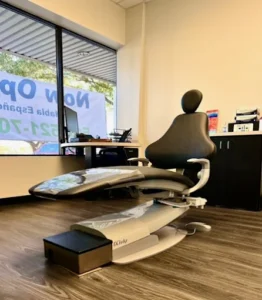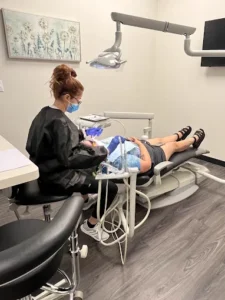Do you ever think about who to visit for your dental issues? Basically, prosthodontics and orthodontics are both dental experts, but practically, the two deal with completely distinct dental disorders. In this article, we will help you to understand who does what dental treatment and when people need them.
What Does a Prosthodontist Do?
A prosthodontist is a specialized dentist who deals with fixed or removable replacement of teeth and their supporting structures. Their work is to restore your smile and enable you to chew when teeth are broken or absent.
What They Handle:
- Fixing Damaged Teeth: With crowns (caps on teeth) and veneers (thin layers on teeth).
- Replacing Missing Teeth: With surgery or before dentures, bridges, or dental implants.
- Complicated Cases: Some of them are complex matters, such as the jaws’ disorders or reconstruction of the full mouth when there were accidental traumas or operations.
Common Procedures:
- Crowns and Bridges: Crowns to restore collapsed or broken teeth or fill in gaps.
- Dentures: Replace some or several extracted teeth.
- Dental Implants: A long-term restoration of edentulism.
- Full Mouth Reconstruction: Treating all teeth and the bite when complex repairs have to be done.
Training:
Prosthodontists, after dental school training, take 3 more years to specialize in these areas.
What Does an Orthodontist Do?
An orthodontist specializes in bringing changes in the alignment of teeth and correcting bites. This is the specialist you should go to if your teeth are crooked or if you feel that your jaw is not rightly aligned.
What They Handle:
- Straightening Teeth: If your teeth are cramped up, twisted, or spaced out, they will correct it.
- Fixing Bite Issues: They handle and treat dental conditions that include overbites, underbites, or crossbites.
- Using Braces and Aligners: They handle cosmetic treatments such as braces or Invisalign,
Common Procedures:
- Braces: Brackets made of metal or ceramics to align the teeth into the right positions.
- Invisalign: Clear aligners, a more discreet way to achieve straight teeth and a nice smile.
- Retainers: Maintain teeth in their new position post-treatment.
Training:
Orthodontists devote three more years after dental school to specialize in the alignment of teeth and jaws.

Can My Dentist Do The Work?
Your dentist looks after your dental health, cleaning your teeth and examining them, including your routine dental care. However, when you require advanced care, you should consult a person who has received their education and undergone training in a particular specialty. In the case of issues concerning alignment or loss of teeth, then you should consult with an expert and specialized practitioner.
Prosthodontist vs. Orthodontist: A Quick Comparison
Here’s a quick comparison of prosthodontists vs. orthodontists to make it more clearer for people:
| Aspect | Prosthodontist | Orthodontist |
| Focus | Replacing missing and broken teeth. | Aligning teeth and jaws. |
| Specialization | They specialize in working with dental equipment like crowns, bridges, dentures, implants, and full-mouth reconstructions. | Brackets or bands fixed on the teeth, clear aligners, retainers, working on misalignment of teeth. |
| Training | Three more years in prosthetics and reconstruction of dentition. | 3 more years in orthodontics, mainly focusing on tooth movement and position in the mouth. |
| Procedures | Specialized dental treatments include crowns, bridges, dentures, dental implants, and full mouth reconstructions. | It includes braces, clear aligners or Invisalign treatment, retainers, and space retainers. |
| Patient Needs | Gaps, broken teeth, dental breaks, jaw reconstruction, cosmetic enhancements. | Common dental problems include crooked teeth, misaligned jaws, overbites, underbites, crossbites, and spacing problems. |
| Collaboration | In many cases, works and coordinates with oral surgeons, periodontists, and general practitioners for dental care. | Works and collaborates with prosthodontists, oral surgeons, and general dentists to provide care for their patients. |
When Should You Visit a Prosthodontist or an Orthodontist?
See a prosthodontist if:
- You have chipped, broken, or worn-out teeth, and you require fillings, crowns, or bridges.
- You’ve had an injury that affects your teeth or jaw.
- You require a full-mouth makeover either to correct a developmental problem or purely for chewing purposes.
See an orthodontist if:
- You have gaps or overcrowded teeth.
- Your jaw feels misaligned—such as if you have an overbite, underbite, or any other abnormality.
- You want to get treatment to align your teeth using braces or aligners so that you can get the smile you want.
FAQs
Q: Can a prosthodontist straighten teeth?
A: No, that’s the job of an orthodontist. Prosthodontics deals with the placing of prosthetics or restoration of teeth, and this sub-specialty is all about fixing or replacing teeth.
Q: How long does treatment take?
A: Some orthodontic treatments may take months or years; an example is braces, while the duration of prosthodontic treatments depends on the degree of treatment needed or the complexity of the case.
Q: Are these two treatments covered by insurance?
A: It may be possible to get covered in some treatments depending on the kind of treatment required, especially medically necessary ones. Check with your provider.
Q: Can you see both specialists?
A: Yes! Sometimes their work interrelates and overlaps when necessary, especially in complicated dental cases.
Contact Celebrate Dental Austin today to schedule your appointment and take the first step toward a healthier, more confident you.








